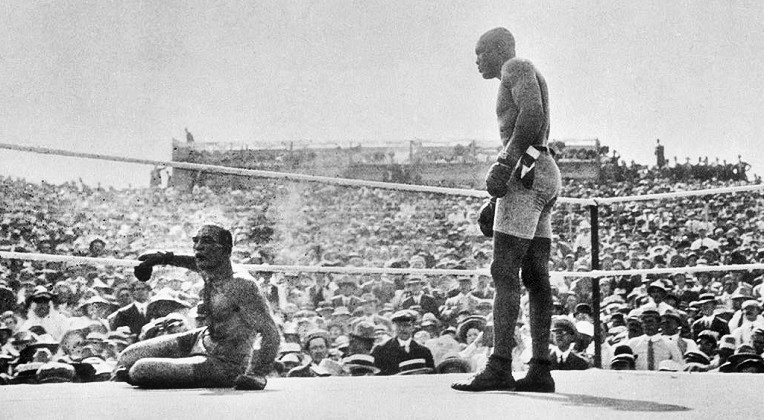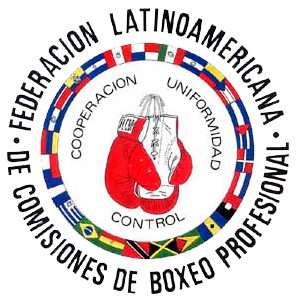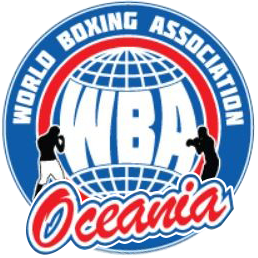Last Tuesday, the 4th of this month marked 247 years since the Declaration of Independence of the United States and also 113 years since the First Fight of the Century in the long history of boxing, the most deeply rooted sport of all practiced at that time.
On an improvised ring in the center of the city of Reno, Nevada, in a venue with a capacity for 20,000 spectators, Arthur John Johnson, known as Jack Johnson, the Giant of Galveston, Texas, predestined to open the doors of fame, years later, faced other great fighters of his race -among them Joe Louis, Ray Robinson Muhammad Ali and Mike Tyson, to mention only the most renowned, among dozens- and the first African-American to be heavyweight champion of the world. In the opposite trench stood former sovereign and undefeated James J. Jeffries who was returning from a six-year retirement and labeled “The Great White Hope.” That is the tale we are about to tell you.
In truth, the event in question should not be called, literally, a boxing match. It was really a confrontation between two ethnic groups with the ultimate aim of proving the hypothetical superiority of one race over the other, in the centuries-old struggle between blacks and whites that still persists universally, although not with the furious irrationality and reprehensible aggressiveness of that time.
In one of the corners was Johnson, the 32-year-old champion, descendant of emancipated black slaves, with a perennial smile flashed by gold teeth, irreverent, who mocked racial barriers, was flamboyant, dapper dandy, arrogant, insubordinate, mocking, sure of his sporting and human worth and ecumenical monarch since two years before, Johnson won the first authorized world championship fight between heavyweights of different skin color, when he technically knocked out Canadian Tommy Burns in 14 of 20 rounds in Sydney, Australia, on December 26, 1908, whom he harassed and challenged for about two years to give him the title shot.
Johnson was defending the belt for the 4th time against JJJ. His previous defenses were vs. Jack O’Brien of Philadelphia, Draw on 5/19/1909; Al Kaufman, KO10, on 9/9/09 and former world middleweight champion Stanley Ketchel, KOT16 on 10/16/09.
His previous defenses were draws, May 19, 1909; Al Kaufman, KO10, Sep. 9 1909 and former world middleweight champion Stanley Ketchel, KOT16 on Oct. 16, 1909; Ed “Denver” Martin Feb. 3, 1903.
The dreaded JJ had captured his first heavyweight crown, for “Colored World Champion,” among racial equals.
In the opposite corner was Jeffries, 35 years old, undefeated in 25 fights with 16 by KO, with 3 decisions, 2 draws and 3 no contests, away from his alfalfa farm he had farmed for six years before after prematurely quitting boxing. He had returned in response to the requests and pleas of white fans who condemned the fact that a black was sitting on the throne of the category that conferred the greatest prestige. In that group of followers stood out the reputed journalist Jack London, author of the famous novel White Fang, among other works, creator of the denomination of Great White Hope that was foisted on Jeffries, his idol, who when he was the champion had said contemptuously of Johnson, “he is a good boxer, but he is black. If I wasn’t the champion I’d fight him like anyone else, but I am. And the title won’t go to a black as long as I can help it.” At 6’3″, an inch taller than the Texan, Jeffries, aka The Boilermaker, had dropped some 43 kilos for the comeback and in appearance seemed in perfect physical condition to contain the champion, of impressive muscle mass, who liked to fight at middle distance, defensively, always waiting for the slightest carelessness or gap left by the opponent to attack with devastating fury, not stopping until he saw the opponent collapse.
That was exactly the tactic Johnson used in the ring that July 4, 1910 to frustrate the pretensions of Jeffries, who from the first bell, tried in vain to approach and attack him, while Johnson hit him and then sought the clinch. He repeated the dose and gradually undermined the resistance of the challenger, never before overwhelmed in such a way. Minute by minute, step by step, without haste, but without pause, he made Jeffries a puppet that he moved at will. In round 15 he hit him with a hard left to the head and the former champion went to the floor for the first time in his career. At the time, there was no rule of sending the standing fighter to the neutral corner. So Johnson charged again against his opponent, knocked him down for the second time with 2 hard punches and after a third knockdown the referee and promoter Ted Rickard protected Jeffries while from his corner the pious towel of the armistice was thrown into the ring, at 2 minutes and 20 seconds of the round.
It was the end of the Great White Hope and the death also of the illusions of the more than 20 thousand fans, all white (blacks were not allowed to enter), who did not cease to harass Johnson, who ignored them throughout the fight, always with a smile of contempt.
ACCUSATION, CONDEMNATION, ESCAPE, RETURN
When what happened in the fight was made public in Reno and other parts of the country (there were no radio broadcasts, the only wireless media at that time), broke out what could be called a fire of great proportions in a good part of the United States: in 52 cities and 25 states of the Union, euphoric masses of Johnson’s brothers of race threw their joy into the air, immediately repelled by angry groups of the today called white supremacists. The serious riots went on for several days before dozens of police officers were powerless to stop the joy on one side and the fury unleashed on the other. The exact death toll is still unknown today, roughly estimated at about twenty people with more than two hundred injured.
A couple of years after his victory over Jeffries, Johnson would fall victim to his relentless persecutors and his thousands of powerful enemies. He had been briefly in prison in 1912 for having married a white woman, his second wife Lucille Cameron-women of that color were his weakness-he was moved from place to place within the territory, “for immoral purposes,” an offense punishable by the Mann Act of 1910 (applied retroactively in his case, illegally, therefore), and then a jury of 11 people, all white, sentenced him to a year in prison. Johnson then fled to Europe, where he stayed for a time and fought there and also traveled to Argentina, Mexico and Cuba.
He would lose the crown in Havana to Jess Willard on April 5, 1915 at 2’20” of the 26th round of a 45 round fight that had a suspicious outcome. Johnson later claimed that he had given up the fight in order to return to his country, after an agreement with the State Department. When he returned to the U.S. he was imprisoned between September 1920 and July 2 of the following year.
When he got out of prison he returned to boxing: between May 6, 1923, when he was 45 years old, and April 28, when he was exactly 53 almanacs and 28 days old, he fought 11 times, the last one against Brad Simmons, whom he knocked out in two rounds. In the period he fought 11 times for a balance of 6 wins and 5 losses.
DEATH AND POSTHUMOUS PARDON
Jack Johnson, a symbolic and uncommon character in the ring and in sports in general, considered one of the 10 best heavyweights in history, left boxing with an unofficial record of 77 fights won, 48 of them by KO, 13 defeats, 14 draws and 19 no decisions. Another publication assigns him a record of 55 wins, 35 by KO, 10 losses with 6 by KO, 5 wins by disqualification with 1 loss, 9 draws, 3 no contests.
A very special member of the International Boxing Hall of Fame since 1990, Johnson, born 3/31/1878, died at the age of 68 on June 3, 1946 in a traffic accident at the wheel of one of his many luxury automobiles on a highway in Raleigh, North Carolina. Minutes earlier he had stormed out of a restaurant where he was refused service. Because of the color of his skin.
In April 2018, the then President of the United States, Donald Trump, in response to thousands of petitions in this regard, including the most recent one made by the famous actor Sylvester Stallone, Rocky Balboa in the movies, granted Jack Johnson the deserved and symbolic pardon for the conviction of which he was the wrongful victim.

















